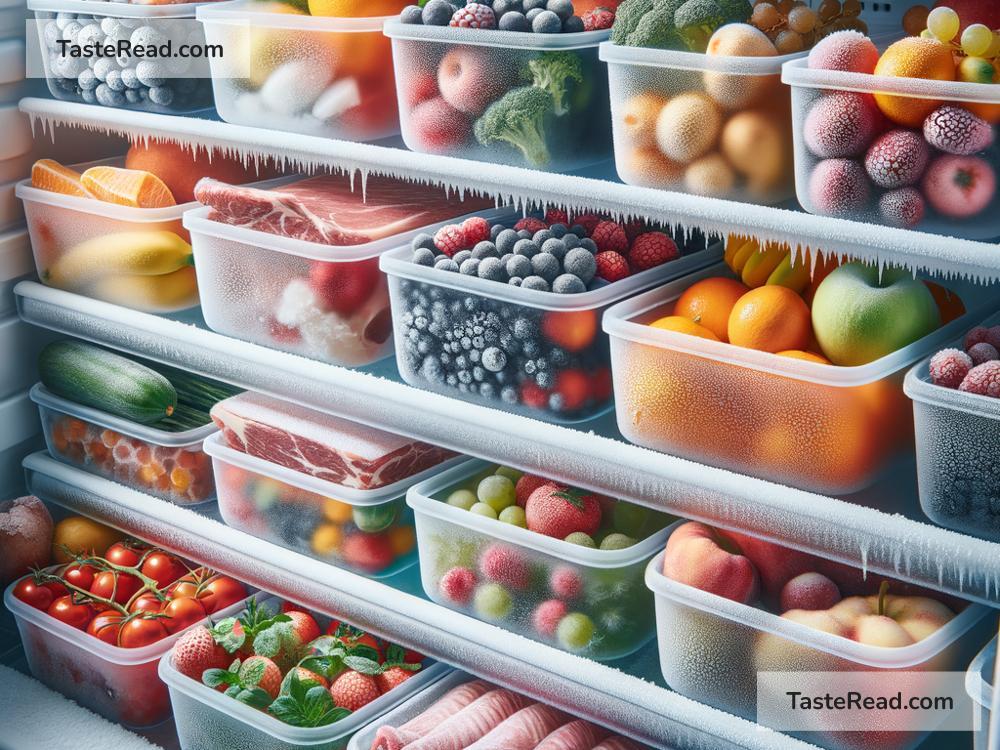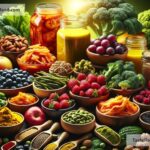The Science of Freezing: How It Affects Food Quality
Freezing is one of the most common ways to store food. It helps keep food fresh for longer, reduces waste, and makes it easier for people to enjoy seasonal foods year-round. But have you ever wondered what freezing does to food? Does it change its taste, texture, or nutritional value? Let’s explore the science behind freezing and how it affects food quality in a simple way.
What Happens When Food Freezes?
Freezing works by lowering the temperature of food so that water inside it becomes solid ice. Most foods contain water, whether it’s a juicy fruit or a piece of meat. When food reaches below 32°F (0°C), the water inside starts forming ice crystals.
This process slows down many chemical reactions that normally spoil food. At the same time, freezing makes it harder for bacteria, molds, and yeasts to grow. These harmful microorganisms need moisture and warmth to survive, and freezing removes both.
That’s why freezing is such an effective way to keep food safe and fresh longer. However, freezing isn’t perfect. It can impact the quality of food in several ways, depending on how it’s done.
The Effect of Freezing on Food Texture
Freezing can change the texture of certain foods, especially ones that contain a lot of water. When water freezes, it expands, and the ice crystals can puncture or damage the structure of food. For example, if you’ve ever eaten thawed strawberries or spinach, you might notice they feel mushy or limp compared to their fresh counterparts.
The size of the ice crystals matters here. If freezing happens quickly, smaller ice crystals form, which causes less damage to the food’s texture. This is why commercial freezers, often used in the food industry, freeze things extremely fast. They preserve texture better than the freezer in your kitchen, which freezes food more slowly and creates larger ice crystals.
Foods with a tougher structure, like meat or bread, generally hold their texture better after freezing. However, even they can experience some changes if not properly handled.
The Effect of Freezing on Food Taste
Freezing doesn’t significantly change the taste of most foods—at least if they are stored and thawed properly. However, the way food is stored in the freezer can impact flavor. If food isn’t wrapped properly, air and moisture can get inside and cause “freezer burn.” This happens when ice crystals on the surface evaporate, drying out the food. Freezer burn can make foods taste bland, tough, or unpleasant.
Another thing to keep in mind is the importance of avoiding temperature fluctuations. Every time food partially thaws and refreezes, it can develop larger ice crystals that damage taste and texture further. This is why it’s best to keep freezer temperatures consistent and avoid opening the freezer door too much.
The Effect of Freezing on Nutrients
Freezing does a good job of preserving nutrients in food, especially compared to other methods like canning or drying. Vitamins like vitamin A and vitamin C are sensitive to heat, light, and oxygen, which can destroy them over time. Freezing slows down these reactions, keeping the nutrients intact.
That said, nutrient loss can happen during freezing if the food is not properly prepared. For instance, blanching vegetables (briefly boiling them before freezing) is often recommended. While blanching slightly reduces nutrients, it helps deactivate enzymes that could otherwise break down food during freezing. This ensures more nutrients are preserved overall.
In some cases, frozen foods may even have more nutrients than their fresh counterparts. For example, frozen peas or berries are often frozen just hours after being harvested, locking in nutrients at their peak. Fresh produce, on the other hand, may lose nutrients during transportation and storage before reaching your plate.
The Importance of Freezing Food Correctly
To get the best quality from frozen food, proper handling is key. Here are some tips:
- Freeze food quickly: Use small portions to speed up freezing time. This creates tiny ice crystals, which help preserve texture.
- Use airtight containers: Wrapping food properly prevents freezer burn and keeps moisture and air out.
- Label and date: Always write what the food is and when you froze it to avoid keeping it too long.
- Check freezer temperature: Ensure your freezer is set to 0°F (-18°C) or lower to maintain the food’s quality.
- Defrost carefully: Thaw frozen food in the refrigerator or cold water instead of at room temperature. This prevents bacteria from growing while the food warms up.
Balancing Convenience and Quality
Freezing food isn’t just about convenience—it’s also about reducing waste and saving money. Frozen foods can be stored for weeks or months without spoiling, helping you cut down on waste. From vegetables to meats, many foods can be frozen successfully, but knowing the science behind freezing can help you make smarter choices.
While freezing isn’t perfect, it’s a powerful tool if done correctly. By understanding how freezing works and how it affects food, you can preserve taste, texture, and nutrients better. So the next time you pack food into your freezer, you’ll know exactly what’s happening—and how to make the most of it!


